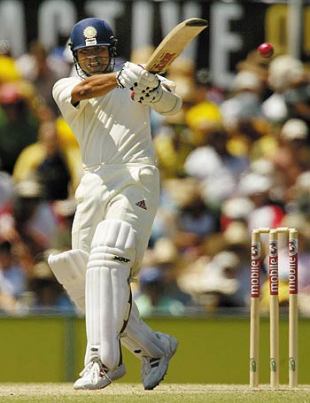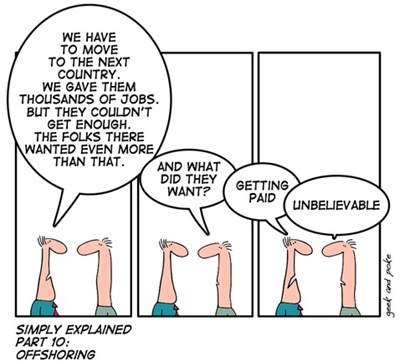The art of staying in the present
Concentration is about living in the moment - which unfortunately isn't as easy as it sounds
July 30, 2009

| ||
Related Links Players/Officials: Sunil Gavaskar | Sachin Tendulkar | ||
Ever since I started playing cricket I've been told about the importance of concentration and how it's the key to batting for a long time and scoring a lot of runs. There has always been plenty of emphasis on this aspect of the game. I'd often hear a commentator say that a lapse in concentration cost the batsman his wicket, or a coach telling me to concentrate harder whenever I couldn't put the bat to ball.
Though I understood the importance of concentration fairly early in my career, I didn't entirely understand the concept itself. And I wasn't the only one.
What exactly is concentration?
A few years ago I was selected to play in the Challenger Trophy (before I made my international debut). We had an interactive session with Geet Sethi, the billiards player, whose definition of concentration remains etched in my memory. He said that concentration is simply remaining in the present. The longer you can remain in the present, the greater your span of concentration. Sounds easy, right?
Nearly two decades of playing cricket has taught me that it isn't. The mind has the peculiar ability of wandering off at the first available moment, and it doesn't need any permission. You might be in the middle of an important match, playing an important knock or bowling the most crucial over, but the mind has a mind of its own. Two places it likes to wander off to are the past and the future.
I'd either start feeling bad or good about what had happened in the past - the ball before - and get disconnected from the present, or I would start worrying about or prematurely celebrating events in the future, getting away from the task at hand.
Whatever happened in the past or might happen in the future does not have, or at least should not have, any bearing on the ball you're going to bowl or play next. All that matters is what you do with that particular ball. Remaining in the present is the only way to concentrate.
One needs to start concentrating once the bowler starts his run-up and the concentration has to be at its peak from the time of delivery till the ball hits the bat. (Of course, this changes for fielders, who need to be alert till one of them fields the ball.)
How can you improve your concentration?
Most games of cricket go on for at least six hours at a time, with occasional breaks. Now concentrating for a few minutes at a time is quite difficult, let alone six hours. So the idea is to switch off after every delivery and then switch on before the next. Switching off means allowing the mind to wander away for a few seconds before getting it back on track. This is not restricted to only batting and bowling; fielders do it too. One needs to relax before starting to concentrate again.
Batting or bowling in the nets can be instrumental in improving concentration, since one needs to concentrate ball after ball in that situation, with very little time in between (as there are usually about six or seven bowlers operating at all times).
The trigger movement
Most players follow a set routine - adjusting the equipment, or something else - that acts as a trigger to snap them out of wander mode and back to the game. Greg Chappell would look at the crowd after playing every ball; MS Dhoni fiddles with his bat and gloves; I scratch the leg-stump mark on the pitch with my shoe; Jason Gillespie used to stop for a few seconds and take a deep breath at the top of his run-up.
Staying in the game
While it's important to switch off and allow your mind to wander, one still needs to ensure that it doesn't drift too far away. For example, a captain has to still think about the field placements and plan his course of action, like bowling and fielding changes. A fielder is supposed to always be looking at the captain or bowler for instructions on any possible changes in the fielding position before starting to concentrate again. A batsman weighs his options of scoring runs off the next ball. I call this not-so-focused form of concentration "staying in the game".
The zone
Then there are some - we call them geniuses - who seemed to get into the zone at will: the state of mind where everything flows automatically. You don't consciously switch on or off, your mind doesn't wander into the past or the future, you're constantly aware of your surroundings and almost always play the ball on its merit or bowl where you want to bowl. We all have times when we get into such states, but to do it on a consistent basis is an art that only a few have mastered. Sachin Tendulkar seemed to get into the zone more regularly than the rest.
How can one attain that state at will?
Honestly, I don't know for sure. I've gathered over the years that even the greatest minds can wander. Thoughts keep coming into your head regardless of whether you want them to. The best way to deal with them is to acknowledge their presence rather than trying to ignore them. Trying to push the thoughts away gets you involved and takes you away from the task at hand. When you leave them unattended, they disappear. Tendulkar's innings in Sydney in 2004 is the perfect example of not paying heed to the thoughts that try to intrude. He didn't play a cover-drive for most, if not all, of his innings of over 200, and I refuse to believe that the thought of playing the shot didn't cross his mind, especially once he was set.
| Sunil Gavaskar once told me that when you reach a milestone your mind takes you to the ones you love most. You feel an immediate connection to those close to you who are watching you achieve the feat and your heart goes out to them and with it your mind too, which results in a loss of concentration | |||
When are we most vulnerable to losing concentration?
I used to think that staying in the present was important only at the beginning of the innings. After all, it's only at the start, when we're plagued with self-doubt, that we are most susceptible to failure; once we get that elusive start, everything falls in place. But I've learned that I was mistaken. A loss of concentration can occur at any point during an innings, and most often does when you're feeling good, like after going past a milestone, when you drop your guard a bit.
I once asked Sunil Gavaskar about it, and he said that when you reach a milestone, the mind takes you to the ones you love most. You feel an immediate connection to those close to you who are watching you achieve the feat and your heart goes out to them, and with it your mind too. You thank everyone on the ground by raising the bat, thank God for his blessings, and your family members in your heart. At such times the mind is anywhere but on the cricket field, and you often end up taking the long walk back before realising what's happened. His advice to me was to recognise that emotional surge and allow yourself a little time to regroup; perhaps spending a few overs at the non-striker's end at such times is a good idea.
The external factors
Bowlers and fielders, especially the ones close to the bat, often try to talk the batsman into playing a poor stroke. Few batsmen succumb to the tactic and lose focus; the majority have their own ways of dealing with it.
Sunny bhai told me that the best way is to ignore the comments and even avoid eye contact with the talkers. On the contrary, someone like Matthew Hayden relishes a chat with the bowler and the fielders. Then there's Brian Lara. The Indian team would decide before the start of a series against West Indies to leave him alone, because if you try to get under his skin he starts concentrating harder and then is almost impossible to dislodge.
Even the crowd has a role to play. But contrary to popular belief, a hostile crowd doesn't have as much of an impact as a cheering crowd.
I remember getting hit on the helmet in Melbourne during the Boxing Day Test in 2003, and 70,000 people cheered Brett Lee and Co to do it again. But the only effect it had on my game plan was to make me more determined. On the other hand only 30,000 people egging me on to hit another four off Daniel Vettori in my debut Test, in Ahmedabad, was enough to lure me into a false stroke. I got ahead of myself and was dismissed.
We now know that regardless of whether we know the definition of concentration or not, whether we play cricket - or any other sport or for that matter - remaining in the present is the essence to being successful. We all do it unconsciously, and perhaps that's why we slip out of it without knowing, but if we manage to do it consciously, at will, keeping close tabs on our mind, we'll be able to control it a lot better and produce better results.
Former India opener Aakash Chopra is the author of Beyond the Blues, an account of the 2007-08 Ranji Trophy season. His website is here




